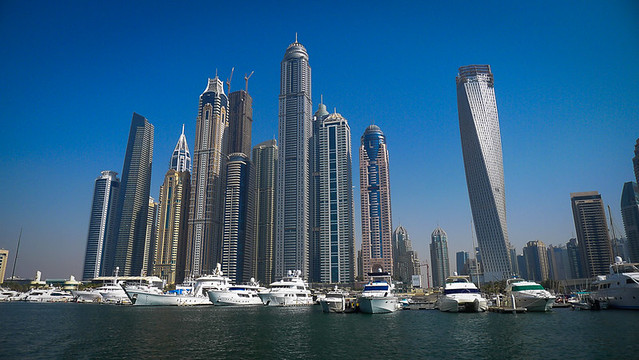Quite astonished by this:
The Burj Khalifa is the tallest building in the world. It's located in Dubai, a city with a lot of other skyscrapers. What Dubai doesn't have: A central sewage infrastructure that can accommodate the needs of a bunch of skyscrapers.
You see the problem.
To solve the issue trucks come and collect wastewater from separate buildings, and then can queue for up to 24 hours to deliver it to treatment plants. Perhaps before building the next mega-mall, Dubai might invest in the unglamorous basics.

